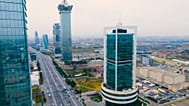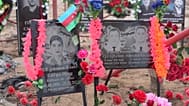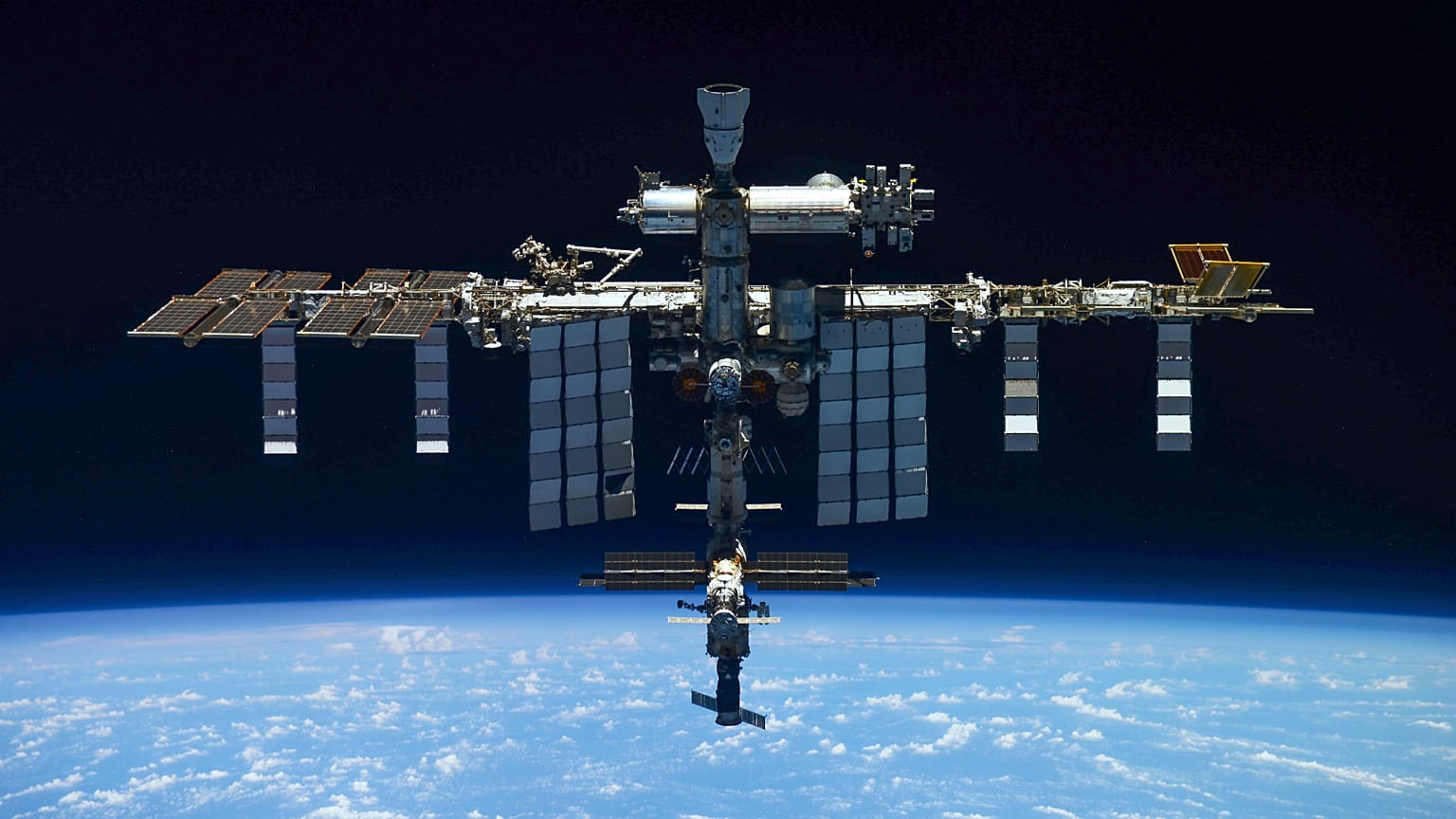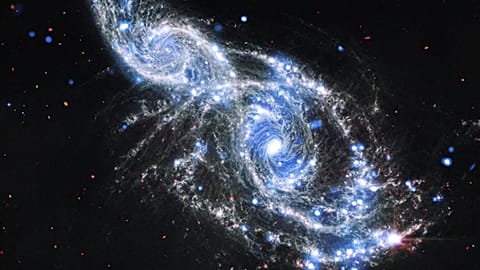Three American and Russian astronauts landed at the International Space Station for the first time in November 2000. We take a look back at some of the station’s biggest moments.
On October 31, 2000, three astronauts from the United States and Russia blasted off from Kazakhstan on a two-day flight into space. Their destination: a 109 metre-long floating station perched above the Earth.
This Expedition 1 crew’s job was to bring the new International Space Station (ISS) to life by doing something no one had done before: spend four months in orbit assembling life support and communications systems needed for a long-term stay in space.
In the last 25 years, the ISS has seen over 290 people from 26 countries visit the space station. Most have been professional astronauts, but sometimes, space tourists and even movie directors have paid a visit.
The space laboratory has hosted more than 4,000 experiments from over 5,000 researchers from 110 countries, according to the United States National Aeronautics and Space Administration (NASA), the American space agency.
It’s also the main training ground for deep space missions. Astronauts are using it to prepare for the upcoming Artemis missions, which will bring humans back to the Moon’s surface for the first time in more than 50 years – and if it all goes to plan, onwards to Mars.
Euronews Next takes a look back at the history of the ISS to celebrate the 25 year anniversary of human life in space.
How was the ISS built?
The ISS National Laboratory says it was inspired by the same dream that many space innovators have today: living in space.
The American government started building the ISS with that goal in mind as far back as the 1950s, by designing a modular orbital station that would house crews and refuel spacecraft on their way to a long-term base on the Moon.
Throughout the 1960s, both the US and Russia advanced their own ideas of what a space station could look like.
By 1984, the ISS project was approved by US President Ronald Reagan, a budget was allotted, and eventually partners in Europe, Canada, and Japan were brought on, the laboratory said.
George Abbey, the director of NASA’s Johnson Space Centre at the time of the ISS’ development, said on the 20th anniversary in 2020 that the Russians allowed the Americans to live nearly 1,000 days in orbit on board their space station, the Mir.
From 1994 to 1998, the Shuttle-Mir programme “prepared the way” for the ISS and “began an era of cooperation and exploration” in space, NASA said.
Europe’s role
The European Space Agency (ESA) got involved in 1988, when it signed a memorandum of understanding with NASA.
The ESA built two of the station’s elements, including the European Columbus laboratory, which specialises in research in physics, materials sciences, and life sciences. It also built several Automated Transfer Vehicles (ATV), or supply ships that carried up to seven tonnes of cargo with provisions, scientific payloads, and propellant to the ISS.
Europe also contributed to equipment and design in the ISS, with the agency claiming that more than one-third of pressurised elements in the station were designed and built by suppliers in the bloc.
The eventual end result of this international cooperation, including the ESA’s involvement, is the largest humanmade object ever to orbit the Earth.
NASA describes the ISS as “larger than a six-bedroom house,” with two bathrooms, a gym, and a 360-degree bay window. The station has a pressurised volume of 1,005 cubic metres and a mass of nearly 420,000 kilograms.
25 years of memories
The ISS has been the backdrop for historic and personal moments alike over the last 25 years. One of the first astronauts to land at the station, Russian Yuri Malenchenko, married his wife Ekaterina Dmitriev from 380 kilometres above the Earth in 2003.
In 2004, American astronaut Mike Fincke listened from the ISS as his wife gave birth to their daughter, Tarali, near Houston, Texas. In the Indian dialect spoken by his wife’s family, Tara means “star”.
There’s been tragedy too for those onboard the ISS. American Daniel Tani mourned family from the station in 2007, when ground crews told him that his 90-year-old mother had died in a car crash.
Then in 2011, American astronaut Scott Kelly found out that his sister-in-law, US congresswoman Gabrielle Giffords, had been shot in the head and survived.
One of the most recent ISS missions is also one of the most memorable. In 2024, astronauts Butch Wilmore and Suni Williams went up to the ISS to test Boeing’s new Starliner capsule in what was supposed to be a weeklong trip.
However, they stayed at the station for more than nine months because of safety concerns over the capsule. NASA eventually enlisted the Elon Musk-owned SpaceX to bring the astronauts back to Earth.
Most of the people who have visited the station have flown the flag of their country, but some enthusiasts have started to pay their way into space.
The first space tourist, California billionaire Dennis Tito, went up with the Russians in 2001 despite objections from NASA. The Russians continued to fly private clients, including a movie crew who went up to the station in 2021.
The station continues to welcome new crews. In June, the first astronauts in decades from India, Poland, and Hungary were welcomed to the station along with Peggy Whitson, the station’s first female commander.
The station has also been the place where thousands of research projects have been conducted. Because of testing on the ISS, scientists developed life support systems that can be used on commercial flights between space stations for the upcoming Artemis missions, NASA said.
Researchers have grown over 50 species of plants on the station – including vegetables, grains, and legumes – and are testing ways to scale crop growth to sustain life in space without the need for shipments.
Astronauts have also broken ground on 3D printing tools and spare parts from the station.
The end of the ISS’ life
The ISS is almost at its end of its life. There are plans for NASA, Russia’s Roscosmos, and the other partner states to deorbit the station.
That’s because the “technical lifetime” of the station is affected by the high number of dockings and undockings that space crews have done over its 25-year lifespan, NASA said, as well as the extreme temperature changes in space.
Russia will work with the Americans on the ISS until 2028 and the US will eventually deorbit the entire system after the station is retired in 2030.
NASA said the US will replace the ISS with “commercially-owned and operated platforms” in orbit for future missions to the Moon and Mars.
The station will be decommissioned by first bringing the station closer to the Earth and then mounting a re-entry mission that will land the station into an unpopulated area in the ocean.
NASA is paying SpaceX nearly $1 billion (€866 million) to boot the space station from orbit in early 2031, according to The Associated Press. The company will launch a heavy-duty capsule to dock with the station and steer it to its landing site in the Pacific Ocean.
For Europe’s part, the ESA said it will stay involved in operations in low-earth orbit (LEO), such as Terrae Novae, an exploration programme that sends robots ahead of humans to the Moon and Mars.
It is also looking to strike business deals for in-flight equipment to support the scientific research of the bloc’s scientists in space.


















